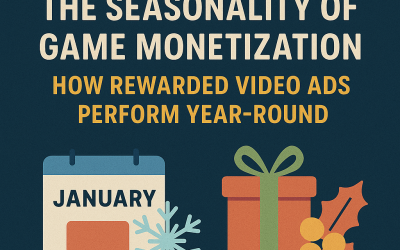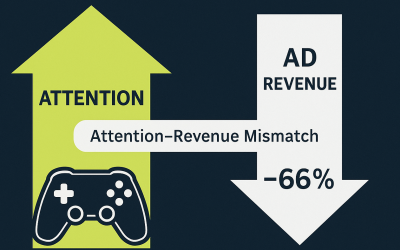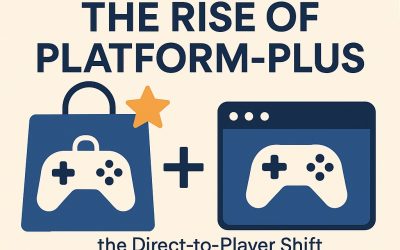Top 5 Myths About Monetizing Your Website
These past 4 weeks, we have talked about Ad Monetization in a rather long and detailed manner. This by contrast is a light read about few but common misconceptions around Ad Monetization… I have tried not to go in detail but touch on few myths and reality.
Monetizing a website is a goal for many website owners, but it often comes with misconceptions that can hinder effective decision-making. While some website owners believe they need millions of visitors or that ads will negatively impact their site’s performance, these are not always accurate assumptions. In this post, we will debunk the top 5 myths about website monetization and provide actionable tips to help you maximize your revenue without compromising user experience. First on our ‘Top 5 Myths About Monetizing Your Website”
Contents
- 1 Myth #1: “You Need Millions of Visitors to Monetize a Website”
- 2 Myth #2: “Ads Will Slow Down Your Website and Drive Away Visitors”
- 3 Myth #3: “All Ad Formats Are Equally Effective”
- 4 Myth #4: “Only Big Brands Can Use Premium Monetization Strategies”
- 5 Myth #5: “Monetization Means Sacrificing User Experience”
Myth #1: “You Need Millions of Visitors to Monetize a Website”
Debunking the Myth:
While having high traffic can certainly increase revenue, it’s not the only factor that matters. Even websites with moderate traffic can generate significant revenue if they implement effective monetization strategies.
Reality Check:
The focus should be on the quality of your audience rather than just the quantity. A smaller, more engaged audience can generate higher revenue per user compared to a larger but less engaged audience. Users who trust your content are more likely to interact with ads, subscribe to services, or make purchases.
Actionable Tip:
Concentrate on creating high-value content that targets a specific niche or audience. Use ad formats like native ads or rewarded ads that align with the content and provide value to your users. These ad types are known for higher engagement rates and are less disruptive.
Myth #2: “Ads Will Slow Down Your Website and Drive Away Visitors”
Debunking the Myth:
While it’s true that some ad implementations can negatively affect website performance, this isn’t always the case. With the right optimization, ads can be integrated without compromising the site’s speed or user experience.
Reality Check:
Partnering with reputable ad networks and using optimized ad formats can ensure that ads do not significantly slow down your website. Ad performance and user experience can coexist if managed properly.
Actionable Tip:
Use lightweight ad formats and optimize your site’s images and scripts to minimize the impact on load times. Regularly monitor your site speed with tools like Google PageSpeed Insights to ensure that the website remains fast and responsive.
Third on our Top 5 Myths About Monetizing Your Website post, relates to Ad Formats.
Myth #3: “All Ad Formats Are Equally Effective”
Debunking the Myth:
Not all ad formats deliver the same results. The effectiveness of an ad format depends on various factors, including the type of website, its audience, and the content it hosts.
Reality Check:
Some websites perform better with rewarded video ads, which encourage users to engage in exchange for a reward, while others may find that banner ads or native ads drive more revenue. The key is to understand your audience and content type to choose the most effective ad format.
Actionable Tip:
Conduct A/B testing with different ad formats to determine which ones generate the most engagement and revenue. Testing various formats and placements can help optimize your monetization strategy for better performance.
Myth #4: “Only Big Brands Can Use Premium Monetization Strategies”
Debunking the Myth:
There is a common belief that only large, well-established websites can access premium ad formats or advanced strategies like programmatic ads. This is not accurate.
Reality Check:
Small to medium-sized websites can also take advantage of programmatic ad networks and demand-side platforms (DSPs). These platforms are increasingly accessible to websites of all sizes, providing opportunities to maximize revenue with targeted and data-driven ad placements.
Actionable Tip:
Explore self-serve DSP platforms that cater to smaller websites. These platforms often offer more transparent pricing and flexible targeting options, making it easier for smaller publishers to enter the programmatic space.
Last on ‘Top 5 Myths About Monetizing Your Website’ post relaes to User experaince.
Myth #5: “Monetization Means Sacrificing User Experience”
Debunking the Myth:
Many website owners fear that introducing ads will harm their user experience. However, effective monetization does not have to be intrusive or disrupt the user journey.
Reality Check:
A balanced approach is essential. By selecting non-intrusive ad formats and implementing them thoughtfully, monetization can complement the user experience rather than detract from it. Properly managed ads can enhance content discovery and user engagement without being disruptive.
Actionable Tip:
Choose non-intrusive ad formats like native ads or in-content ads that blend seamlessly with the site design. Additionally, consider frequency capping to avoid overwhelming users with too many ads. This approach helps maintain a positive experience while still generating revenue.
Monetizing your website effectively is possible, regardless of its size or audience. By debunking these common myths and focusing on strategies that prioritize both revenue and user experience, website owners can optimize their monetization efforts. Experiment with different methods, analyze the results, and adapt your approach to fit the needs of your audience and content. Share your experiences or additional myths you’d like to see addressed in the comments below.
To Conclude, understanding the ad ecosystem is crucial for all stakeholders, from advertisers and publishers to intermediaries like ad networks and data providers. As the digital advertising landscape continues to evolve, staying informed and adaptable is key to success. AppLixir remains committed to innovation in the ad monetization space, continually developing solutions that benefit all parties involved. To learn more about AppLixir’s offerings or to discuss potential partnerships, feel free to get in touch with our team.



